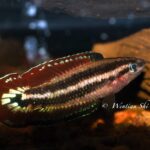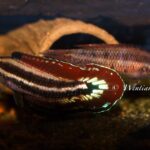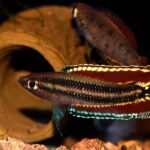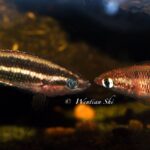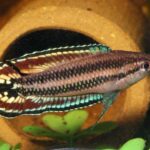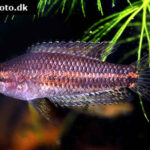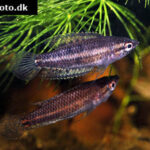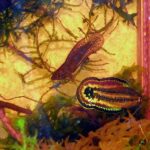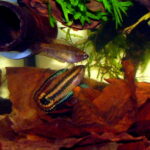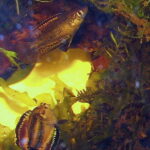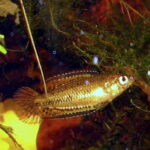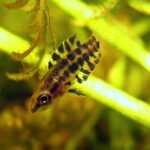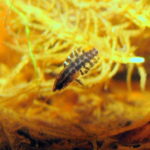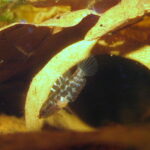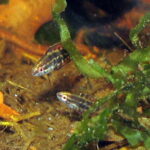Kottelat & Ng 2005
First description:Diagnoses of six new species of Parosphromenus (Teleostei: Osphronemidae) from Malay Peninsula and Borneo, with notes on other species. The Raffles Bulletin of Zoology 2005 Supplement No. 13: 101-113.
Characteristics: one of the largest and strongest p. species, belonging to those with long dorsal fin (species name): Dorsal: XIII-XV, 6-7, total 15-17, anal fin: XIII, 9-10, total 22-23. Total body length often 5,00 cm. Stronger, less delicate, sometimes somewhat compact appearing body physique compared to many other species. Also the colouring is different from the rest of the species. The male has striking multicoloured banded unpaired fins with a sequence (from outside to inside) of parallel narrow white, broader almost black, light blue, broad red-brown and (sometimes near the body) white bands.
In the particularly striking caudal fin the black area forms an irregular, resolved spot on the edge. Therefore these fish have a very colourful appearance. Also the dark bands, which are typical for licorice gouramy, contribute to this picture, because in this species they are often greenish and even interrupted. These features give the fish a stain-like body image. Contrary to the other species of the genus, the male has a particular colour pattern in the unpaired fins that is grey showing many white, but in fact transparent, small stains. G. Kopic points at the fact that dominant females can sometimes be almost as colourful as the males. The black stripes in the unpaired fins are usually significant in the females, too.
Similar species: due to the different colouration and compact body shape compared to other species, the risk of confusion is low. The structure of the fins and the colouration of the tail fin should be sufficient for diagnosis in both sexes even for not fully grown up fish.
Occurrence / Distribution: Borneo, southeastern Kalimantan Barat in the basin of Sungai Pawang and Sungai Liong, north of Nanga Tayap (terra typica). The name spec. Manismata (or Manis-Mata), originally used in European trade, refers to a settlement further north, although it is unclear if the fish is found there.
Threat: as the rain forest and wetlands destruction is not a locally or temporarily limited event and the overall distribution of the species is still unknown (up to now only few localities are confirmed), the fish has to be regarded as highly endangered. Additionally it has to be considered that most of the fish in hobbyists tanks go back to only a few initial imports.
Discovery/First import: P. quincedim was found by H. Kishi (“Team Borneo”) in 2001 near Nanga Tayap. It was first introduced to Japan and later on in the same year in Germany and other countries by the company Glaser. Here it was traded as spec. Manis-Mata. This species is one of the few that were first introduced in Europe by the trade.
Trade: the species was in trade only rarely after 2001, no longer as far as we know after 2006. Most of the remaining aquarium stock goes back to the first import and to private imports of few parosphromenus specialists. Often the old name spec. Manismata still occurs, which draws off the attention from the real area of distribution.
Care / Breeding: not different from the other species. Although the species appears to be tough and in fact sometimes withstands a certain deterioration of its environment, attention should be paid to the maintainance of low conductivity and acidic pH, otherwise the beautiful colours will not be visible for long and breeding will not be successful. Apart from this, breeding this species can sometimes be easy in a tank that is sufficiently large and has some hiding places for the females. The robustness of the fish does not allow the use of small-size tanks (<20L), which are well suited for many other species. They can produce relatively large clutches (up to more then 100 eggs).
Behaviour / Particularities:the fish shows horizontally courtship and was almost something like a “fashion” fish due to its striking colouration. During the first years after its introduction it was bred by some specialists in relatively large numbers. Meanwhile only a small remaining stock is available.
PF


